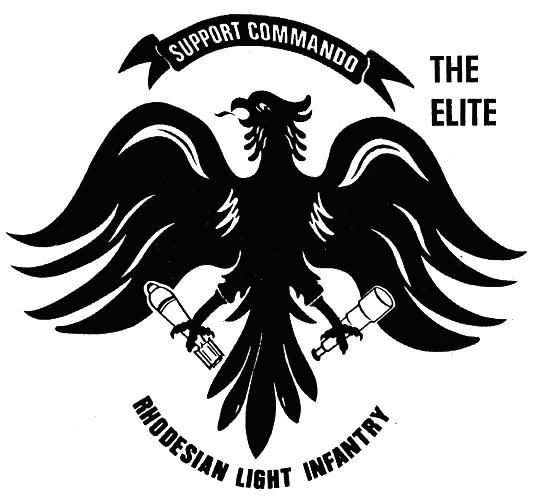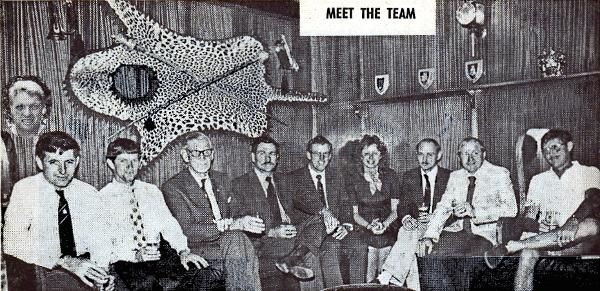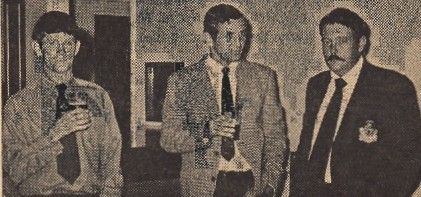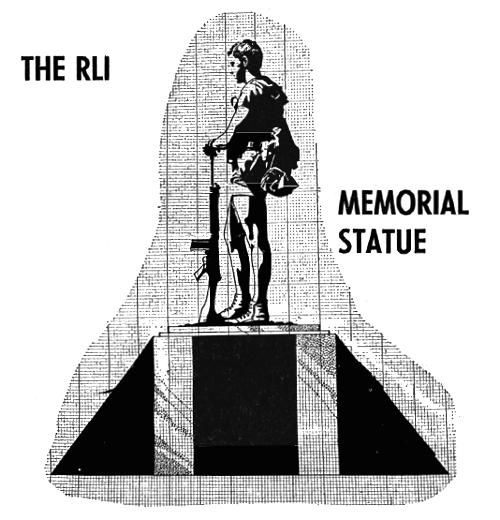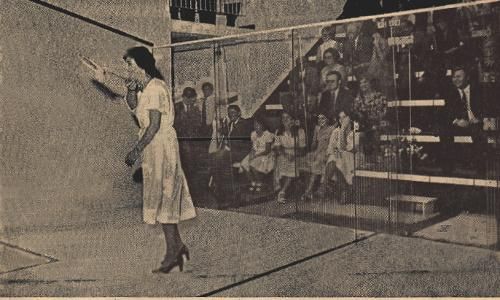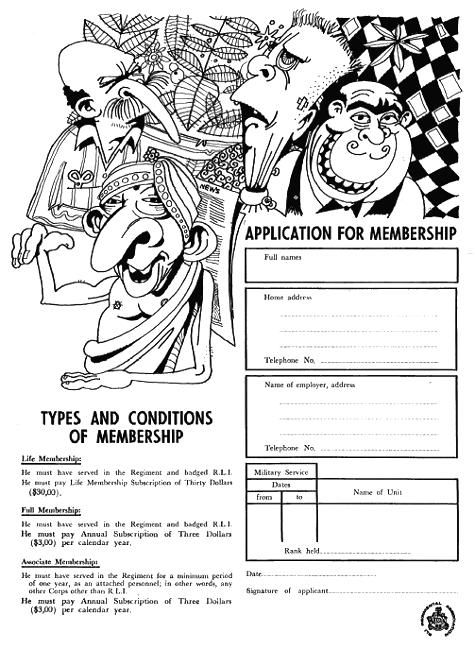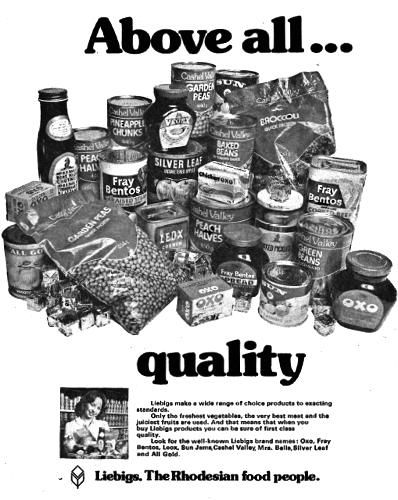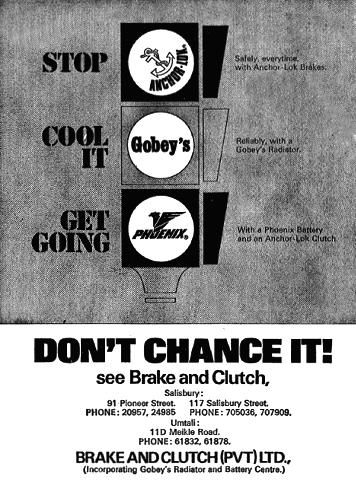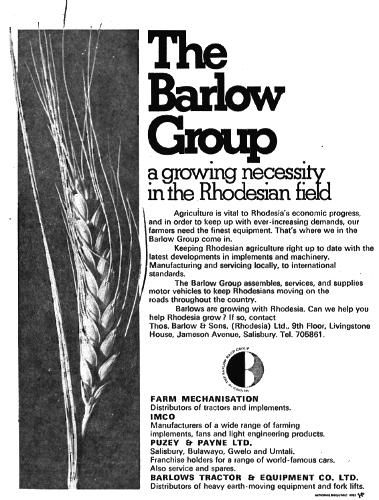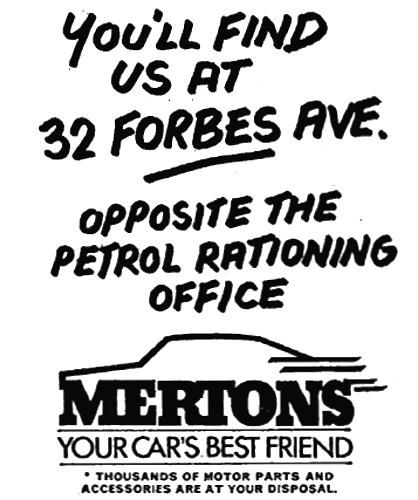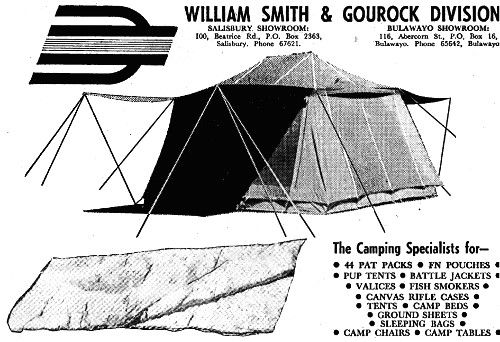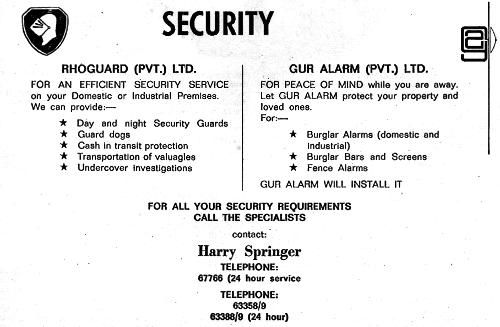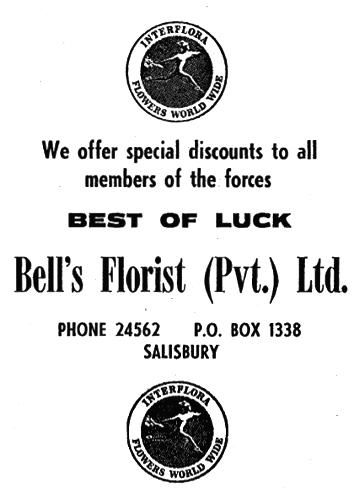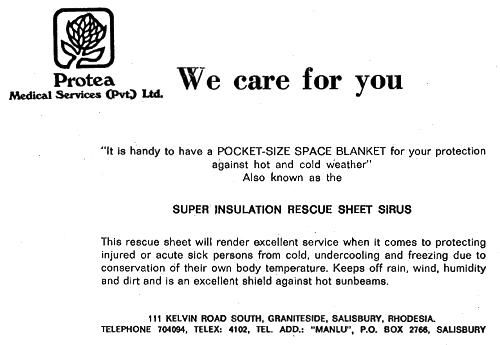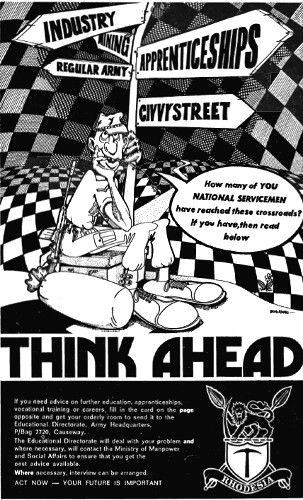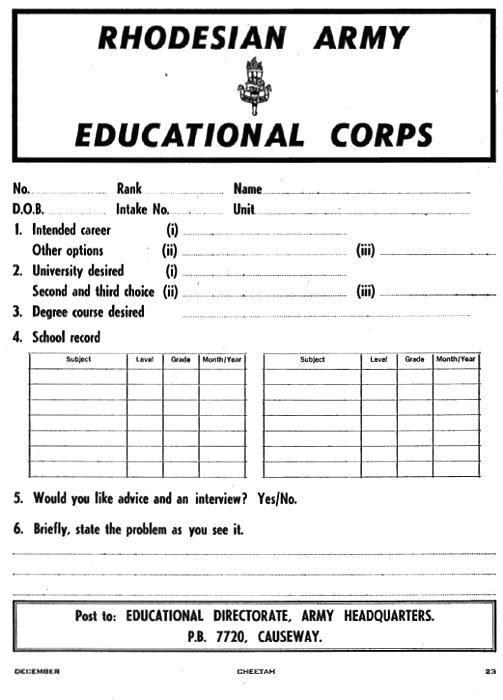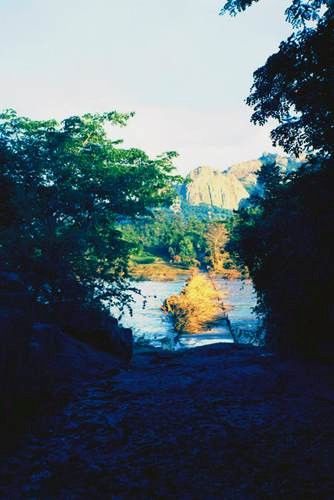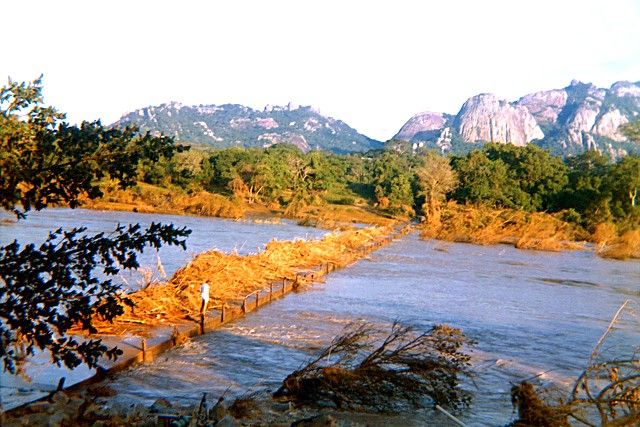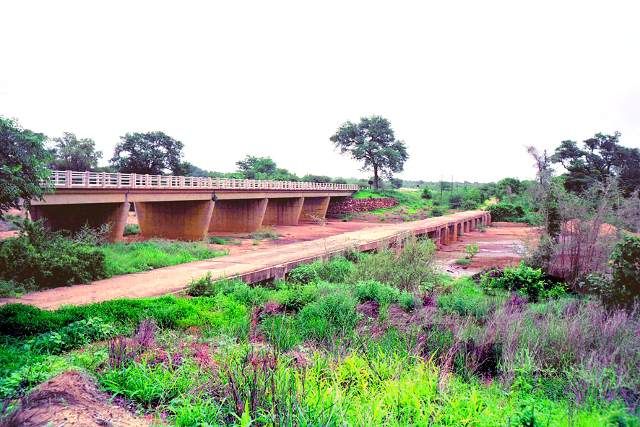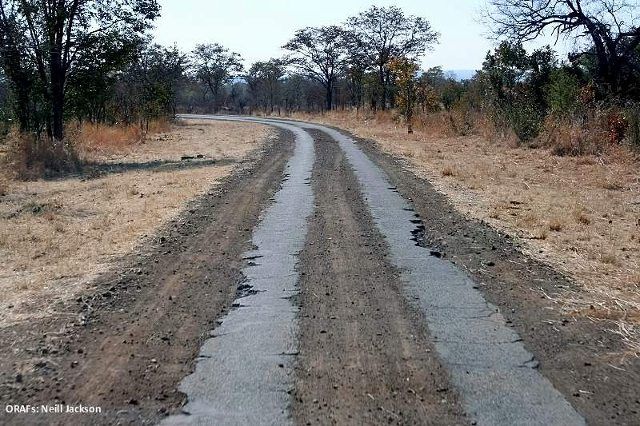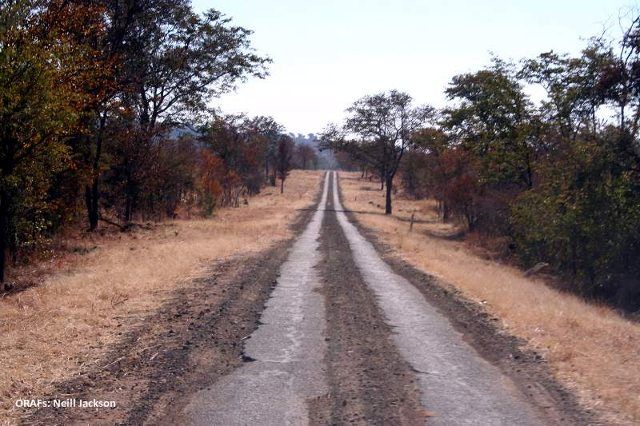Cheetah Magazine December 1978

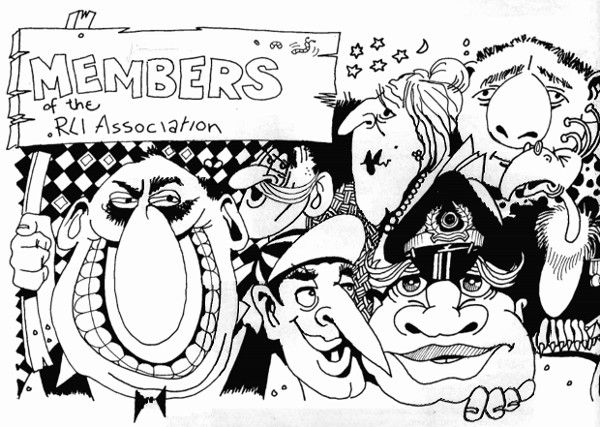
OUR HISTORY
In I960 it was decided for the first time to include a Regular European Battalion in the Army order of battle and as a result No. I Training Unit was established at Brady Barracks, Bulawayo. No. I Training Unit not only provided personnel for the Battalion, which was formed later, but also provided personnel for C Squadron, The Special Air Service, and the Selous Scouts a reconnaissance squadron
In I960 it was decided for the first time to include a Regular European Battalion in the Army order of battle and as a result No. I Training Unit was established at Brady Barracks, Bulawayo. No. I Training Unit not only provided personnel for the Battalion, which was formed later, but also provided personnel for C Squadron, The Special Air Service, and the Selous Scouts a reconnaissance squadron
The 1st Battalion, The Rhodesian Light Infantry officially formed on 1st February, 1961. This day is now recognised as the Regimental Birthday.
In the latter part of 1961, the Battalion from Bulawayo to the new barracks in Salisbury, Cranborne Barracks, having just returned from operations on the Northern Rhodesia - Congo border.
In 1964, the organisation and role of the Battalion was changed from the conventional infantry unit to a Commando Battalion. The wearing of the Green Beret was also introduced.
Colours were presented to the Battalion on 19th June, 1963, by the then Governor, Sir Humphrey Gibbs, K.G.M.C., O.B.E., on behalf of Her Majesty Queen Elizabeth II.
On 27th June, 1970, the Regimental Colour was trooped before the Prime Minister, The Honourable I. D. Smith, I.D.
Regimental traditions which form an important part of Battalion life, are gradually being built up. Two are noteworthy, namely the Regimental Quick March, "The Saints", and the mascot — the Cheetah.
For the past few years the Battalion has borne the brunt of border control operations in Mashonaland and has been engaged in numerous, most successful operations against terrorist gangs that have infiltrated into Rhodesia.
OUR AIMS
(a): To establish liaison between the Regiment, E.R.E. and ex-members.
(b): To nurture the traditions of the Regiment.
(c): To organise social functions for the re-union of all ex-RLI members
(d): To rehabilitate wounded ex-soldiers.
(e): To render guidance to members leaving the Regiment.
(f): To offer welfare assistance to widows.
(g): To assist with the Public Relations of the Regiment.
(h): To raise funds.
(i): To implement any projects which may, from time to time, be approved by the National Executive Committee.
Branches at;
Head Office:
SALISBURY: P.O. BOX 8294, CAUSEWAY.
GWELO: P.O. BOX 734, GWELO.
CAPE TOWN: P.O. BOX 2574, CAPE TOWN.
Volume: 1: Number: 2 - December 1978
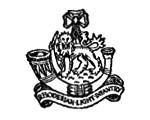
CONTENTS
1. CHRISTMAS MESSAGE FROM LT GENL G. P WALLS
2 1. COMMANDO NOTES
3. 2 COMMANDO NOTES
4. 3 COMMANDO NOTES
5. SUPPORT COMMANDO
6 RLI ASSOCIATION
7. RLI MEMORIAL STATUE
8. THE DAVE PARKER MEMORIAL SQUASH COURT
9. JOKES FOR THE BLOKES
Editor: Capt D. P. Hobson
Art Work: Capt M. L M. Blackman
Please all correspondence to:
The Secretary
RLI Association,
P.O. Box 8294.
Causeway
THIS IS YOUR MAGAZINE — HELP US KEEP IT THAT WAY
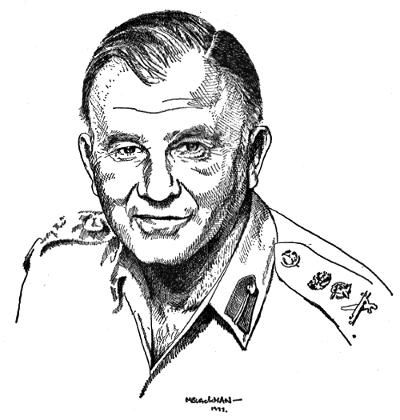
"THANK GOD FOR THE INCREDIBLE RLI;
THE COUNTRY OWES YOU SO MUCH".
A CHRISTMAS MESSAGE from
LT GENL G.P. WALLS, GLM, DCD, MBE.
"I was delighted to receive the first edition of 'Cheetah', the regimental newsletter In a new and attractive format. At the same time, I was honoured and privileged to be invited to write a Christmas message for this issue.
Christmas is traditionally a time for families to draw together, spiritually, mentally, and where possible, physically, and I welcome and applaud the renewed efforts by the RLI Association to keep all those who wear the Green and Silver In touch with each other. The Association has done good work in the past; may the present surge of effort result In even greater effectiveness.
It seems so many years ago that I took my leave of the Regiment as CO, but what I said then still applies, and is even more appropriate now. I remarked that when the going became really tough, and when all the chips were down, I hoped I would find myself among RLI guys and bolstered by their morale, spirit, and fighting qualities. With the RLI on our side, we can only be winners! But more than that, the camaraderie and will to fight, provide the best environment in which to be. The going hasn't become all that tough and the final play Is not yet to hand, but we live in momentous times, when the future of our civilization and standards are at stake. Thank God for the incredible RLI; the country owes you so much, and I have so much pride In still "belonging" through the Association.
A happy Christmas to all members and families of the Regiment and the Association; and full confidence In the maintenance of standards, opportunities, and pursuit of happiness in 1979 and beyond."
It gives me great pleasure to write a few notes for the Christmas edition of "The Cheetah"elsewhere in the magazine are details of all the happenings in the Commandos. Suffice to say that we remain operationally the most flexible unit that has ever been created. From chasing Gandangas in hot steamy TTLs to special operations in places where our passports are for strange reasons not recognized. Add all this to our remarkable success in Fire Force operations and I am pleased to tell you that the characteristics of the Cheetah, i.e. speed and aggression in the kill are very much alive and well. Statistics can be misleading and At very best an absolute bore, however our statistics for this year alone show that we have accounted for +/-483. Not all this has been achieved without tragic loss ?f life of nine and others wounded. To the families of the RLI who have suffered and grieved, as we have over the loss of loved ones please accept our deepest sympathy. They will be remembered with pride. At this time of year I would like to thank the wives, girlfriends and families of the RLI who have to put up with the constant tensions of belonging to our unit. Without their support, I am sure, morale would take a nose dive. Like everyone else in our unsettled country everyone is wondering where exactly we are going. I believe it is important for the morale of the Europeans to see their RLI still strong and together. Help us keep it that way. To all members of the RLI family both serving and away from us I wish you all the best for the coming festive season. Finally to the Editor and staff of our brand new Regimental magazine our Congratulations and Thank You for your effort.
Yours faithfully,
(I. R. Bate)
Lieutenant Colonel,Commanding Officer.
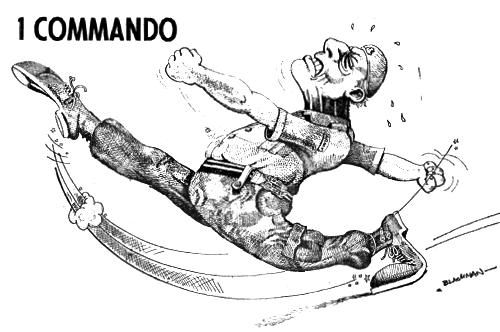
1 COMMANDO
News from the Op Area
HURRICANE
After a few months absence, the Big Red found itself on Fire Force once again. Although the bush trip was not a record one, it was fairly successful both on and off the field. Off the field, Lt Neil "Orca" Storey made sure his last fling with the Commando was a hefty one, whilst on the field 2Lt Gavin Wehlburg was introduced to the Crack and Thump side of operations, So successful was this introduction that towards the end of the bush-trip the young subbie had to be loaded into a chopper, so laden was he with grenades and bullets. Wherever he landed there was sure to be a fierce punch-up.
During breaks, a hardcore card school was always on the go, Bastard Bridge and Black Bitch being the favourites. Here 2Lt Bob Graves, the butt of most jokes since the departure of Neil Storey, procured the name "Flash", due to his amazingly sluggish reactions during the hours of play.
The Commando was visited by General Hickman, and we have since heard he is not too keen to return, having been served raw potato salad over lunch by the normally efficient CSM Edwards. The burly W02 Edwards in turn earned himself the title "Mtoko Mauler", for reasons best kept quiet. However Big Red is interested to see a certain Pro wrestler from that area has since retired.
An interesting side-line to the bush-trip was the fitness kick of the beefy 2i/c. Unfortunately, on the second day of his rigorous schedule, Lt Mich Walters found that sharp sprinting after a four-year lay-off was a trifle far fetched, as did his Achilles tendon. Nevertheless, this injury was accepted with much delight by the Andrew Fleming nurses, and there was much scheming about who's turn it was on night duty, when Big Mich was wheeled in.
THRASHER
This bush-trip was split, the first month being ground deployment, and then back to Fire Force for two weeks. So it was an with large packs (loaded mostly with paper-backs), and a spot of pressure on the feet. The lightest pack belonged to Sgt Stu Taylor, who was often observed moving off on his 7-day deployments with a maximum of two tins strapped to his ancient webbing, normally chopped ham.
Lt Dick Stent spent his days moving from Gomo to Gomo„ searching for one best suited to sun-tanning. Anti-tracking in his case was useless, a« his trusty sergeant Merv Bramwell, suffering continually from the dreaded gypo guts, left a fresh trail wherever the call-sign moved.
O.C. Major Fred Watts suffered from this affliction along with the Commando, and his I.A. drills in the K-car when nature called were fairly interesting, ensconced as he was inside a chopper, flak-jacket, jump-suit, and in mid-air.
It was about this time that Cpl Ed Nel had the O.C. in K-car foxed for a while. Finding himself under pressure with his stick, in thick bush, Ed's answer to the high-orbiting choppers call of "Where are you?" was a confident "I am above you, . . . now".
SOCIAL
Pride of place goes to the O.C. and Colleen on the birth of a son (albeit without wings on the right shoulder and a moustache). Congratulations.
Congratulations also to Cpls.. John Foran and Errol Lottering on their respective weddings.
PROMOTIONS
O.C. to Major
Neil Storey to Lt.
Rich van Malsen to Lt.
Tony Edwards to W02.
Jimmy Lynch and Trevor Penna to L/Cpl.
CHEERS
Three very prominent members of the Commando over the last few years have left, and will be greatly missed. Lt Ian Scott, posted to 4 Bde, Lt Rich van Malsen (the aggressive goblin) is the Battalion's new R.S.O. and Lt Neil Storey has left the army. We owe much to their hard work and humour, and to them a big thanks and good luck.
The same to: '
Cpl. Pappy Bolton, posted to Engineers
Al Chambers on finishing Intakes 156 and 157.GENERAL
Once again the 'Big Red took 1st prize in the Industrial Section at the Gatooma Show, thanks to Neil Storey and his team, who worked hard to achieve this. Needless to say, a fine thrash was had by all as well. The death of Sergeant Coenie Marnewech has saddened the Commando. The popular and able Mamie will be greatly missed. Cheers, mate.
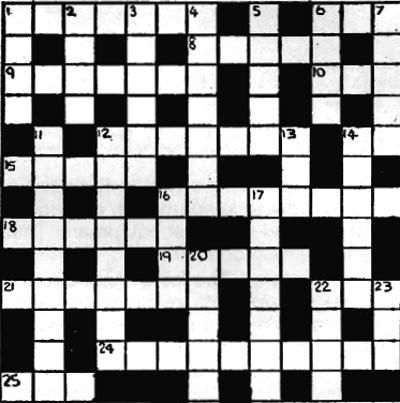 "
"THE ONE COMMANDO CROSSWORD
Down:
1. Marines in as weapons (4).
2. American soldiers and two learners get the measure (4).
3. Gunners angle one on for the quota (6).
4. Fire eater swallows nothing for the horse (?).
5. Marksman without the right direction gets the bird (5).
6. Cardinal in the explosive gets temporary shelter (4).
7. Pole and point mixed up to run off (5).
11. Equipment that always lets the soldier down
12. Order nothing for this elite unit (8).
13. Old soldier will drop behind (3).
14. Cover from air attack on the golf course
16. Cutting part of the sword (4).
17. Backward Royal Academy takes it easy to detain (6).
20. Quiet, lost from the shake. That's where it comes from (5).
22. Initially British Territorials (1,1,1,1).
23. Positive solution (3).
Across
1. Mad because the grenade was tossed around (7).
6. See 21 across.
8. Search for somewhere to shoot (5).
9. Military Intelligence and fifty join it with. 1st Class backing for part timers (7).
10. New spelling.
12. Unaccompanied in the saddle this Officer (7).
14. Is, the answer (2).
15. The Band Master won't score runs with this, but he mustn't stop (5).
16. Phoning the enemy over the wedding. No likely! (8).
18. The Royal Marine comes in to fade badly Should have worked the land (6).
19. See 21 across.
21, 6 and 19. What the Nanny did to the messy sentries? (7,3,5).
22. Attempt the answer (3).
24. Negative responses to the targets? (10).
25. Encountered at the weather office briefly (3)
Keep Scrolling for the Solution.
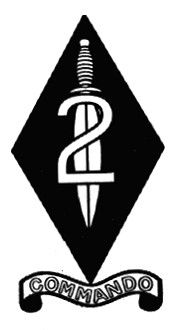
2 COMMANDO
Once again it is time to go to print and update you with the Commando. Since the last contribution the Commando seems to have travelled many, many miles and have twice had to move literally from one side of the country to the other. This with its inherent punctures, breakdowns and mishaps seems to have occupied a fairly large amount of our time.
At the last time of writing the Command, as can be seen from the last notes, was taking flak from a large number of directions. The flak and other things that were flying around appear to have settled somewhat. With the departure of five members of our local Mafia to the glorious holiday resort located in an obscure corner of Brady Barracks, things have almost returned to normal, except that most of the junior NCOs proved to be card holding members of the Mafia. This has created a problem with leaders. When we say almost to normal we mean it. Various members were alleged, by you know who, to be carrying a very lucrative trade in ter weapons. This led to many searches and long hours of questioning; the boot of a small car was searched as "they" had it on good int that it contained a 14,5mm heavy machine gun. Alas, they were disappointed and departed, without even a red face.
As normal the population of the Commando has fluctuated considerably with postings in and out and member* leaving on completion of their time.
ARRIVALS
Capt, Pete Hean as 2I/C, posted in from Adjutant. Welcome Pete and hopefully your profound knowledge of administration will greatly assist us.
C/Sgt Stew Hammond as CQ, posted in from MT. As Stew is a qualified driving tester the Commando can now move legally,
2Lt Duff Gifford. A national service subbie fresh from Hooters and now OC 8Tp. Good luck, but don't burn your body out before we can use you.
L/Cpl Jerry Doyle. Having reported him as leaving in the last notes Jerry is now back. His intention to return to Canada came unstuck after a long bout in the Lions Den. On attempt ing to purchase an air ticket he discovered that he had no funds.
Sgt Keavney on temporary attachment. Another 'Brit, we are becoming inundated.
DEPARTURES
Capt Jesse Hickman across the fence to HQ2Bde. Thanks Jesse for all your work and no doubt .you will be a frequent visitor during R and R.
W02 Authur Budd on posting to 2RAR as RQMS. Good luck Authur and thanks.
L/Cpl. Fig Figueredo, L/Cpl Richard Bratt, L/Cpl A Boise — On completion of time. Thank you all for your services. Good luck in civvy street.
Also back with us for a short period are various members of Intakes 156 and , 157 doing their first TA call-up. It's good to see them back and hope they enjoy it.
PROMOTIONS
There have been a few promotions in the Commando which probably accounts for our greater turn over of beer:
Cpl. Nick Clayton to sergeant and posted to 6 Tp.
L/Cpls. Danny Danielson, Nico Boer and Tony Braunswick to full corporals.
Tpr. Steve Devine to Lance Corporal for the second time.
Congratulations all-of you.
OBITUARY
It is with great regret we record the death in action of Tpr Andre Botes on 22 June 1978. Our deepest sympathy to Mrs 'Botes, family and friends.
Finally we have a number of wounded and injured members:
Sgt. Fraser Brown. 'Minor injury to his leg as a result of an electric detonator going off accidentally.
Tpr. Jordie Jordaan. Shot in the head in a contact. Fortunately it was his head as he has recovered very well and is now on holiday in Durban, per kind favour of the Terrorist Victims Relief Fund.
Tpr.Roger Emery. Head injury as a result of a vehicle accident. Now convalescing at Tsanga Lodge.
Tpr. Steve Bacon. Shot in the leg in a vehicle ambush. Not serious, just enough to leave a scar to show his grandchildren and tell war stories about.
Get well quickly all of you and look forward to seeing you all back in the fold.
Solution to Crossword
Across:
1, Angered; 8, Range; 9. Militia; 10, Neo; 12, Colonel; 14, Be; 15, Baton; 16, Engaging;
18, Fanned; 21 6 and 19 Changed the Guard; 22, Try; 24, Objectives; 25, Met.
Down:
1. Arms; 2, Gill; 3, Ration; 4, Dragoon; 5, Snipe; 6, Tent; 7, Elope; 11, Parachute;
12, Commando; 13, Lag; 14, Bunker, 16, Edge; 17, Arrest; 20, Udder; 22, T.A.V.R.; 23, Yes.
Well the lovers have done it again! For the second bush trip in a row we have proved that we are able to MAKE LOVE AND WAR by beating, for the umpteenth time, the Battalion record for the number of kills in a bush tour, (a record we held anyway). During 13th June to 25th July 1978
we managed to account for 80 charlie tangos (their last tango in Mtoko) and in our latest tour, 9th August to 20th September, 1978, 84 Chenjis (a lover's derogatory term for a terrorist) were exterminated. Come on -the other Commando's we can't carry you all the time! See our new Training Manual "All's fair in Love and Martial War" on general issue to all lover personnel (or would be Lovers).
EX LOVERS
Lt Jug Thornton has passed onto other pastures and has been posted to Battalion HQ for a while. Once again it is noted that the battle-hardened Strike Force knew where to look for true talent. Tug goes nursing his "Old K car injury" after a profitable and exciting tour with The Lovers and we wish him a fond farewell.
2Lt Fabian Forbes, our mangwanani specialist is off to Training Troop for a while to teach Shona customs. A place will be reserved for you in the Commando until February next year so see you then with luck.
2Lt Andre Scheepers has now successfully passed the SAS selection and we wish him happy soldiering and good hunting in his new unit.
W02 John Norman, DMM, Congratulations on your new promotion -and well deserved award of the DMM. W02 Norman ha* been posted to Training Troop and we wish him luck and thank him for all the excellent service he gave 3 Commando.
C/Sgt John "That Reject from Andrew Fleming" Coleman has successfully passed the Potential Officer Course, Officer Selection Board and is attempting to coerce the staff of Hooterville into issuing him a pip or two! You know what they say about Bullshit bafflles brains? Jokes aside — good luck Colour, we hope to see your dazzling shoulders in the near future.
Sgt Paul Abbott is off to destinations unknown. We thank him for his creditable operational service and with him luck in his new appointment.
NEW LOVERS KARIBU (i.e. Welcome)
2Lt Chappie "wet behind the cars" Rosenfels is now the new leader ol 14 Troop.
CSM Terry Miller has taken over as Chief Whip.
C/Sgt Brian Lewis is now the new "mustard to custard" specialist.
Karibu to the following new trooples: Michael Chance, Eike Elsaeiser, Rodney Taylor, Keith Rogers, Alan Palmer- Jones and our new Doc, Cpl Pete Rice.
ATTACHED LOVERS
Cpls. Norris and Percy Hodgson are doing service with Training Troop. What with 2Lt Forbes, CSM Norman, Cpl Norris and Cpl Hodgson all overseeing the training, the other Commando's can relax with the knowledge that they will in future receive an injection of lover fighting ability, charm and fortitude, otherwise only experienced in 3 Commando. We hope that it will serve to bring the other Commando's up to an acceptable standard!
KILLED ON ACTIVE SERVICE
The Commando deeply regrets the loss in action of two of our fighting lovers. Tprs Simon Clarke and Joe Byrne died fighting for Rhodesia. Both excellent soldiers who will not be forgotten by the Commando. Our sympathies to their families.
TROOP NEWS (for which Commando HQ would like to apologise to all readers)
11 Troop. Since the last issue we have undergone numerous changes — for better or worse is highly debatable. We say our fond farewells to 2Lt "Rommel" Forbes who goes to Training Troop (there goes the standard of recruits), C/Sgt John Coleman on Potential Officers Course (him an Officer?) and finally to Cpl Bob "Shoulders/Basic" Smith to D.R.R. (we hear by special request of RhMP). Thanks to you all and best of luck.
From 12 Troop comes Sgt (check in the last issue for attributes) Coom. Our two faithful NS "Please can we go on Stop 1, Banana 6 and all externals"—Mesham and Anderson return to the fold with happy heart. To them and the new bunch of Troopies — Welcome.
Our heartiest congratulations to L/Cp.l George Galloway on his well-deserved BCR. Confirm you only did it for a few days off in town,
Enough is enough and we end with a quick "It really did happen" from our new Troopies.
"Mark, do you have the Cammo Cream?"
'No, ask the Tracker."
"Matshonga, do you have the Cammo Cream?"
"Aaah Eweeh!"— plus the rest.
12 Troop. 12 Troop, or "Mobile Flex Unit", continues to ripple around the Camp, barebreasted with biceps bulging. First of all we would like to say good-bye to Sgt "Fonz' Coom who has gone to impart good manners and "how to behave in public" lessons to 11 Troop. Hellos to C/Sgt "Daisy" Flowers, Tprs Rock Botha, Yank Elsaesser, Gordon Fry and welcome back to our TA member, Jerry Stander, with his Mobile Daglo Panel. Welcome back also to the two flexes who have recovered from flex injuries, Claude Botha and Alex Nicholls. The latter has returned from his three monh skive, deep in-love, and is heard to hum himself to sleep with "The Wedding March".
Derek Bowhay, who has returned from the "Donkey Wallopers" after discovering that cleaning out horse manure wasn't such a skive. He has excelled himself on the Volley
Ball court — when no one else is available to play. "War Story" Walsh has left us for a month's vacation, all expense paid at a well known hotel in Bulawayo where no doubt he will recount his experiences to spell-bound listeners, "Piggy Watt and Chalky are at the moment oozing charm and sex appeal to the birds in Durban and no doubt we will hear about it when they return. "Star Wars" Gillespie continue to cook like an extra-terrestrial alien scattering the enemy in all directions. "Blob" Wilkins has swelled the ranks with his considerable flex frame. Well, that's all, keep flexing.
13 Troop. Well a lot has happened since our last news. Some for good and some for bad and some mediocre and some. . ,
Starting from the top, Lt Rog Carloni has taken over from 2Lt Andre Scheepers (that's the bad news!) Cheers to 2L Scheepers and well done on your recovery and passing SAS Selection, Cpl Percy Hodgson has been attached to Training Troop for a while but will be back!
Question: "What do you get with Happy Wedding Bells?'
Answer: "Unhappy bank managers and in-laws."
Cpl Jimmy Gibson and Ed Wandel have got — unhappy bank managers — congratulations and condolences.
Congratulations and farewell to Mark Wentzel who married a day after his discharge. Cheers Wentt and good luck.
Welcome to National Servicemen, Tprs Pascoe, Weave and Taylor, Also welcome back to Tpr Bain who is now a T.A., poor lad!
L/Cpl Gavin Fletcher recently departed to the Okavamba Swamps to try and locate the rare Okavamba bird, who travels around on safaris looking for a mate. Well, he didn't make it, so he's back looking for that rare Rhodesia bird seen any lately?
14 Troop, 14 Troop welcome their new officer ? Lt D. C Rosenfels. Last bushtrip after attempting to break a leg on Para Course, he was only able to hobble about until the next course came up which he passed without any serious damage to his body (we think).
At the moment Cp,l Norris is attempting to gain his third stripe while Fergus O'Brien is busy trying to swop his MAC for a stripe. L/Cpl. Warren is on holiday despatching RAR and has just written asking for a posting to them and a big pot of Cammo Cream,
This bush trip started off with four weeks of pack slogging including mountain climbing and swimming lesson where 2Lt Rosenfels had the problem of being wet up to his neck while the majority of us only got our knee caps wet
The four-week episode came to an end on a sad note with the loss of Tpr Joe Byrne doing his second bush trip .with us Our sympathy and respects to his family and friends in the U.S.A. We also send our condolences to family and friends of Tpr Simon Clarke of New Zealand whom we lost the previous bush trip.
We say good-bye temporarily to "Nick the Greek' Amyrosiadis, who's mastered the art of fire and movement He is now acting head waiter, with a damaged shoulder. Another departure was that of L/Cpl Condon, who decided that the beach and sun of South Africa were far more pleasant than six week bush trips and is now AWOL
Madness!
Finally we would like to welcome Tprs Leighton, Foulds Palmer-Jones and Rogers to the Troops,
LOVERS VIBES. We hope to produce a song for each of Cheetah. Herewith the first:
WHAT'S IT WORTH?
(Sung in a slow Scottish drawl)
I'm lying in bed, I'm in Room 26
And I'm thinking of the things I've done
Like drinking with Troopies
And boning my boot
And counting the Medal's I've won.
CHORUS
"Oh Sergeant is this the adventure you meant,
When I put my name down on the line,
Oh you talk of the sunshine, the booze and the birds,
And I'm asking you Sergeant
WHERE'S MINE."
I've a brother in Jo'eys
With long curly hair
When I signed up he said "I was mad"
He said shooting floppies just was not his scene
That brother of mine wouldn' t cull.
CHORUS
But I can put up with most things
I've done in my time
I can even put up with the pain
But what do you do,
With a round in your head
When you're facing a lifetime in bed.
CHORUS
I had 18 bottles of whiskey in my cellar, and I was told by my wife to empty the contents of each and every bottle down the drain, or else! I said I would, and proceeded with the unpleasant task. I withdrew the cork from the first bottle and poured the contents down the sink, with the exception of one glass, which I drank. I extracted the cork from the second bottle, and did likewise with it, with the exception of one glass which I drank. I then extracted the cork from the third bottle and poured the whiskey down the sink which I drank. I pulled the cork from the fourth bottle down the sink, and poured the bottle down the glass which I drank. I pulled the bottle from the cork of the next, and drank one sink out of it, and threw the next down the glass. I pulled the sink out of the next glass and poured the cork down the bottle, then I corked the sink with the glass, bottled the drink and drank the pour. When I had everything emptied, I steadied the house with one hand, counted the glasses, corks, bottles and sinks with the other, which were 29, and as the house came by, I counted them again, and finally had all the houses in one bottle which I drank. I am not under the affluence of incohol, as some thinkle peep I am. I am not half as thunk as you might drink. I fool so feelish, I don't know who is me and the drunker I stand here, the longer I get.
Training Troop Blues
One it often asked why the instructors in Training Troop wander around muttering incoherently and spend what little leave is allowed them in Ward 12 with the screaming meemies.
The following list showing the nationalities which have passed through the Battalion should be a sufficient answer.
How do you persuade a German to cut out goose-stepping or teach an Eskimo about bush survival.
Australian, American, Argentinian, Austrian
Belgian, Brazilian
Canadian, Chinese. Chilean, Czech
Danish, Dutch
English, Eskimo
Finn, French
German, Greek
Hungarian
Italian, Irish, Israel
Kenyan
Mauritian, Malawian
New Zealander
Portuguese, Polish
Russian, Rhodesia
South African, Spanish, Scots, Seychelles, Swede, Swazzi, Swiss
Tanzanian, Turk
Venezuelan
Welsh
Yugoslavian
Zambian.
SUPPORT COMMANDO
Quite a lot of water has flowed under the bridge since our last contribution, most of it completely censored except for:
FAREWELLS. The Commando bids a very sad farewell to its first CSM, WOII 'Phil Payne who is posted as RSM at Balla Balla. He has our congratulations and sympathies and will be sorely missed, his appetite for cowboy books, other "bookies", brandy and biltong will severely hit the viability of the south Matabeleland economy.
Other farewells include Sgt van Vuuren (now a bankrupt toy manufacturer!), Charlie "Brown" (out of work astronaut), Bisley Coetzer and Wily Kuhn (now married to Chunkie Mclver's sister), Gary Lieberman, "Mother" Walters, Mike Watson, BCR, "Gonzo" Taylor and Lance Landsdell.
WELCOME. We welcome to our ranks Lt Brian Carton Barber (new OC Recce Troop who is a mixture of anthropologist, author, women's adviser to Readers Digest and a soldier in his spare time). We also welcome numerous new members to the 4 elite" including various rejects from Grey Scouts, other Mongolians and a smattering of others well acquainted with the geography of the Central Police Station.
ACHIEVEMENTS.
1. L/Cpl "Buzzard" Doulgeris (Parachuting is my life!!) on failing his PJI course.
2. Trooper "George" Wondrum on the purchase of a suit. He is hoping to buy a tie next R and R.
3. Trooper Dickens on managing to carry two full water bottles plus webbing a distance of 80 metres.
4. Cpl Russell Phillips for possessing an exhaustible supply of friends who have cheap radios and tape recorders for sale.
5. Lt Prinsloo on having lost his virginity.
6. Lt Willar on having regained his virginity.
OTHER NEWS.
Other news of significance consists of:
a. Presentation by the Air Rhodesia hostesses to the Commando of a handsome cheque which will be used to purchase a custom-made inter-troop parachuting trophy.
b. Constant improvement of the Commando lines by the planting of lawns, hedges and other flowering miscellanea.
OVERHEARD.
A certain WO2 on having landed by parachute in in potentially hostile area, at the top of his voice —
"Gather around me, I'm a married man!"
CONCLUSION.
Life progresses apace with only the odd operational deployment to spoil an otherwise tranquil existence. The Commando hopes to be back for Xmas (we held an excellent Open Dance despite our absence) and look forward to inviting all our friends, ex members and other disreputable dignitaries to : party to be held on or about 15th December (wording taking directly from a Comops Operational Directive).
The RLI Association Committee meets In the "Cheetah's Lair,
From left to right — (Inset) Capt "Hobo" Hobson, Capt Colin Dace, RSM Ken Reed, Col John Salt, Harry Springer, Wally Watson, Carrie Taylor (Secretary), Lt Norman Neville, Basil Rushforth and Maj Charlie Aust.
Lt Genl Walls Is seen chatting to Mrs. Bates and (back view) Mrs. Adams.
In the background Is Pat McLaughlin
Looking rather pensive—
RSM Ken Reed. Air Lt Mike Strauss and WO 2 Allan Beattle
THE RLI MEMORIAL STATUE
A Memorial Statue is to be cast in bronze of a typical Trooper of Rhodesia's crack airborne Light Infantry Regiment, The RLI. This life-size Statue will stand on a plinth in the centre of the "Holy Ground" in the RLI Barracks.
The Statue to the "Incredibles" will commemorate those members of the Battalion who have died in action from the beginning of the war. Over this ten year period a total of 52 members of the Unit have been killed in action and 11 have died whilst on Border Control Operations. There were a total of 29 non-operational deaths during this period.
In return the RLI have achieved the highest kill rate of my unit in the war. Although reluctant to release complete terrorist casualty figures accounted for by this remarkable Unit, it is believed they number in the thousands. Renowned for their aggressiveness and professionalism, the RLI has been the spearhead of the nation.
In addition to the Statue being erected in the centre of the "Holy Ground", the surrounding "Holy Ground" is to be re-organised and the area suitably prepared to add to the beauty of the Memorial. Furthermore the Chapel will undergo major renovations, including a complete refitting of the pews and general furnishing as a mark of respect to those who have given their lives for the Country.
The design of the Statue has been undertaken by Captain Blackman and will be cast in bronze in Rhodesia by Mr R, Fiorini. The project is being organised by the RLI Regimental Association. Should members of the public wish to make contributions to the Memorial Statue and to the renovation of the 1 RLI Memorial Chapel, donations should be sent to the:-
1 RLI Association,
P.O. Box 8294,
Causeway.
Telephone: 703463, extension 148.
Gilly Parker Seen opening thE New court. (Photo: Courtesy The Rhodesia Herald)
On 30 November this year a two-year-old ambition was finally realised when Mrs. Gilly Parker officially opened the new squash court at RLI, dedicated to the memory of her late husband, Col Dave Parker — The "King".
It is fitting that The King be remembered in this way because it was he who, indirectly, was the cause of the whole project. WOII Len Monson, the chief instructor at the RLI gymnasium, recalled that, when Col Parker first took over command of 1RLI, squash was about as viable here as the dodo. During his tenure as CO he encouraged the revival of the sport to a large extent and, in the process, sowed the seeds of interest in Len Monson, himself. As a result, attention was paid to the game (what else can you do when an 85 kg ex Rhodesian wrestler asks you to play!) and RLI fielded a team in the Mashonaland SRA 6th league, which team included Col Parker, himself an avid squash player. Eventually, when The King moved to the corridors of power, he left behind (among many other things) a very healthy squash contingent at RLI.
In 1977 Len Monson went down to South Africa on a recruiting drive, as part of an army team. While he was down there, encouraging people to join our happy band (assisted, no doubt, by the odd application of a judicious half-nelson) he used every trick he knew to boost recruitment and one of these tricks involved using a technique known as "talking bulls...", particularly with regard to the extent of sporting facilities available at RLI. When he returned to Rhodesia his conscience got the better of him and he took a long, critical look at our sporting facilities, with a view to improving them as much as possible. One glaring shortcoming which quickly made itself apparent was the lack of adequate squash facilities and it was decided that a new squash court, with a reasonable seating capacity and good payability, would be built.
Fund-raising for the venture, which was undertaken solely by the members of the gymnasium, began in earnest in October of 1977. Among the activities which were most successful were a "Match-Legs-To-Head" competition which raised $6 000, a Ball, held at the RLI Amenities Hall, which raised $350 and two gambling nights held for members of the Battalion. These raised a total of $400. Additional capital plus materials was raised by attacking various members of the public — their support, as always, was ready and generous. To all of them a great big vote of thanks.
Under the able directorship of Len Monson the new court, along with a few other sundry (ladies' change-room and sauna) and not-so-sundry (pub) additions, started to take shape in mid-1978. Unforeseen snags, such as rock in the ground, added over $1 000 to the original cost and several grey hairs to Len's head. However, work has progressed steadily until now, and the project is virtually complete. The court will have seating capacity for over 150 people and the pub overlooks the court as well, which means that further spectators can combine the best of both worlds if they so wish. The playing surface of the court has been finished to the standard required by International players and it is hoped that it will become a very popular venue for top-class matches. One statistic which is somewhat staggering is the price of the glass back-wall which is a feature of the court. This little fixture retails at something like $5 500. Woe betide the man who puts a crack in that!
For those who were at the opening ceremony it was worth remembering the reasons for the existence of the court and its adjuncts. We cannot think of a more suitable memorial than this to the memory of a man who was himself so vital and energetic. He would have loved it.
JOKES FOR THE BLOKES
"Come on Doctor, let's have it. How am I?"
"Well, your teeth are all right, but those gums will have to come out."
* * *
The teacher was warning the children against catching cold in the rotten, snowy, freezing weather. She said:
"I had a little brother once who was only six years old and one day he took his brand new sled out into the snow. But he caught pneumonia, and three days later he died."
Silence. Then a voice asked:
"Where's his sled?"
* * *
"Uncle John! Gladys has eaten a poisoned mushroom!"
"I'm busy, Fred."
"Uncle John! Now Gladys has fallen in the river! She's drowning!"
"The mushroom would have got her anyway."
* * *
Three ministers of religion:
A Church of England Vicar, a Roman Catholic Padre and a Jewish Rabbi, were discussing how they split up their offering.
"I", said the Vicar, "am quite methodical about it. I count up the total and divide it into two, put one half aside for Heaven and take the other myself."
* * *
"I", said the Padre, "am not so painstaking, I split up the collection into two halves. I take the right-hand one for myself. I leave the other for the Almighty."
"And I", said the Rabbi piously, "consider both your systems unethical. Should any of my congregation show generosity I throw the cash— all of it — up to Heaven. Should any of it by chance just happen to come down again, then of course it's mine."
* * *
Pupil: "Me slept with Daddy last night."
Teacher: "No, I slept with Daddy last night."
Pupil: "Must have been after me fell asleep, teacher."
* * *
"Does granny still slide down the bannisters?"
"Yes; but I've put barbed wire there now."
"Does it stop her?"
"No, but it slows her down."
* * *
The tough guy was bragging about his older brother, who had spent his boyhood with Al Capone, the infamous gangster.
"My big brother once socked Capone right in the kisser," he said.
"I'd like to shake your brother's hand," said one of the impressed listeners. "Well," commented the tough guy, "we ain't gonna dig him up just for that."
* * *
Said the little boy to his father: "Daddy, what would you have been if you hadn't married mummy?"
"A bachelor, son," said father.
"And what would you have been mummy, if you hadn't married daddy?"
"A spinster," answered his mother.
"Well," said the little boy, "What would I have been if you hadn't got married at all?"
"Keep your mouth shut," said his dad, "You are going to be a traffic warden anyway."
* * *
A woman was in London during the days of the trams, and she approached a policeman and asked, "If I put my foot on the rail, will I get electrocuted?"
"Only if you put your other foot on the overhead cable, madam!"
* * *
A man charged with murdering his wife stated that she was always saying, "hang the expense . . . hang the ex pense," so last night he did!
* * *
True quote from Johnny Craddock, after Fanny had been demonstrating how to make doughnuts—"and I hope all your doughnuts look like Fannies!"
* * *
"Did you ever have this before?"
"Yes, Doctor."
"Well, you've got it again!"
* * *
A crowded No. 2 bus is heading down the Grassmarket at high speed, when the conductor notices that a sweet little old lady wants to get off at the Greyfriar's Hotel. Being unable to reach his bell-push due to the crush, he struggles to the front of the bus and knocks on the glass behind the driver's head — SCREECH!
The driver hits the brakes hard and the bus slews to a halt with tyres smoking and passengers thrown into a pile at the front of the bus. The conductor wriggles his way out of the melee, only to find the driver sitting in the seat, white faced and trembling with fear.
"What's the matter?" he asks. "Never, NEVER, do that again," the driver stammers, "I used to drive a hearse."
* * *
A young lady sat in her stalled car, awaiting help, when two young men walked up and volunteered their aid.
"I'm out of petrol," she explained. "Could you push me to a garage?"
They readily put their muscles to the rear of the car and rolled it several blocks. After a while one fellow looked up, exhausted, to see that they had just passed a garage.
"How come you didn't turn in at that one?" he called out.
"I never go to that garage," the girl shouted back. "They never give trading stamps!"
* * *
An African chief, complete with his entrouge, visited
Britain and stayed in a luxury hotel. Whilst eating his first meal the chief became thirsty.
"Fetch water," he ordered.
A servant came back shortly afterwards with a glass of water. The chief drank this but still felt thirsty.
"Fetch water," he ordered.
The servant went off but returned empty handed.
"Why no water?" he demanded.
"Sorry, Chief," the servant replied. "White man sitting on well."
* * *
"Daddy, why can't I play with the other kids?"
"Shut up and deal."
JOKES FOR THE BLOKES
"Come on Doctor, let's have it. How am I?"
"Well, your teeth are all right, but those gums will have to come out."
* * *
The teacher was warning the children against catching cold in the rotten, snowy, freezing weather. She said:
"I had a little brother once who was only six years old and one day he took his brand new sled out into the snow. But he caught pneumonia, and three days later he died."
Silence. Then a voice asked:
"Where's his sled?"
* * *
"Uncle John! Gladys has eaten a poisoned mushroom!"
"I'm busy, Fred."
"Uncle John! Now Gladys has fallen in the river! She's drowning!"
"The mushroom would have got her anyway."
* * *
Three ministers of religion:
A Church of England Vicar, a Roman Catholic Padre and a Jewish Rabbi, were discussing how they split up their offering.
"I", said the Vicar, "am quite methodical about it. I count up the total and divide it into two, put one half aside for Heaven and take the other myself."
* * *
"I", said the Padre, "am not so painstaking, I split up the collection into two halves. I take the right-hand one for myself. I leave the other for the Almighty."
"And I", said the Rabbi piously, "consider both your systems unethical. Should any of my congregation show generosity I throw the cash— all of it — up to Heaven. Should any of it by chance just happen to come down again, then of course it's mine."
* * *
Pupil: "Me slept with Daddy last night."
Teacher: "No, I slept with Daddy last night."
Pupil: "Must have been after me fell asleep, teacher."
* * *
"Does granny still slide down the bannisters?"
"Yes; but I've put barbed wire there now."
"Does it stop her?"
"No, but it slows her down."
* * *
The tough guy was bragging about his older brother, who had spent his boyhood with Al Capone, the infamous gangster.
"My big brother once socked Capone right in the kisser," he said.
"I'd like to shake your brother's hand," said one of the impressed listeners. "Well," commented the tough guy, "we ain't gonna dig him up just for that."
* * *
Said the little boy to his father: "Daddy, what would you have been if you hadn't married mummy?"
"A bachelor, son," said father.
"And what would you have been mummy, if you hadn't married daddy?"
"A spinster," answered his mother.
"Well," said the little boy, "What would I have been if you hadn't got married at all?"
"Keep your mouth shut," said his dad, "You are going to be a traffic warden anyway."
* * *
A woman was in London during the days of the trams, and she approached a policeman and asked, "If I put my foot on the rail, will I get electrocuted?"
"Only if you put your other foot on the overhead cable, madam!"
* * *
A man charged with murdering his wife stated that she was always saying, "hang the expense . . . hang the ex pense," so last night he did!
* * *
True quote from Johnny Craddock, after Fanny had been demonstrating how to make doughnuts—"and I hope all your doughnuts look like Fannies!"
* * *
"Did you ever have this before?"
"Yes, Doctor."
"Well, you've got it again!"
* * *
A crowded No. 2 bus is heading down the Grassmarket at high speed, when the conductor notices that a sweet little old lady wants to get off at the Greyfriar's Hotel. Being unable to reach his bell-push due to the crush, he struggles to the front of the bus and knocks on the glass behind the driver's head — SCREECH!
The driver hits the brakes hard and the bus slews to a halt with tyres smoking and passengers thrown into a pile at the front of the bus. The conductor wriggles his way out of the melee, only to find the driver sitting in the seat, white faced and trembling with fear.
"What's the matter?" he asks. "Never, NEVER, do that again," the driver stammers, "I used to drive a hearse."
* * *
A young lady sat in her stalled car, awaiting help, when two young men walked up and volunteered their aid.
"I'm out of petrol," she explained. "Could you push me to a garage?"
They readily put their muscles to the rear of the car and rolled it several blocks. After a while one fellow looked up, exhausted, to see that they had just passed a garage.
"How come you didn't turn in at that one?" he called out.
"I never go to that garage," the girl shouted back. "They never give trading stamps!"
* * *
An African chief, complete with his entrouge, visited
Britain and stayed in a luxury hotel. Whilst eating his first meal the chief became thirsty.
"Fetch water," he ordered.
A servant came back shortly afterwards with a glass of water. The chief drank this but still felt thirsty.
"Fetch water," he ordered.
The servant went off but returned empty handed.
"Why no water?" he demanded.
"Sorry, Chief," the servant replied. "White man sitting on well."
* * *
"Daddy, why can't I play with the other kids?"
"Shut up and deal."
TYPES AND CONDITIONS OF MEMBERSHIP
Life Membership;
He must have served in the Regiment and badged R.L.I.
He must pay Life Membership Subscription of Thirty Dollars ($30,00).
Full Membership;
He must have served in the Regiment and badged R.L.I.
He must pay Annual Subscription of Three Dollars ($3,00) per calendar year.
Associate Membership;
He must have served in the Regiment for a minimum period of one year, as an attached personnel; in other words, any other Corps other than R.L.I.
He must pay Annual Subscription of Three Dollars ($3,00) per calendar year.
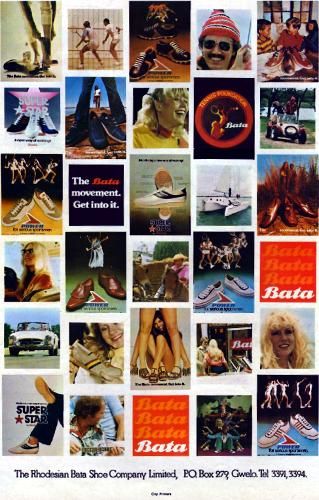
Back Cover of magazine.
If you can assist with the page "Jokes for the blokes" then please mail the page to Eddy Norris at orafs11@gmail.com
The following advertisements appeared in this magazine:-

